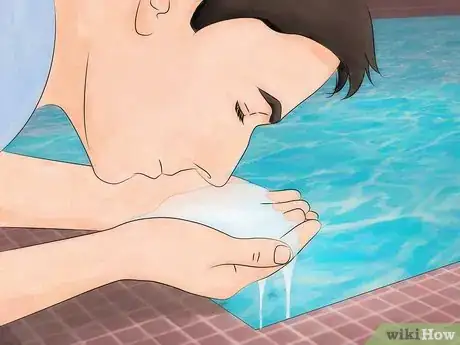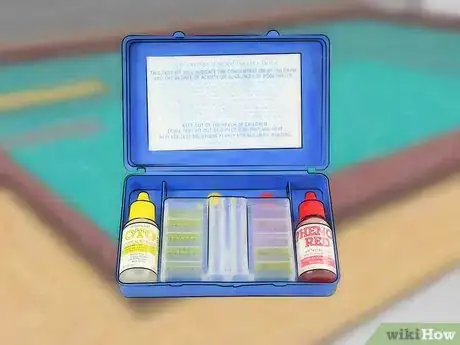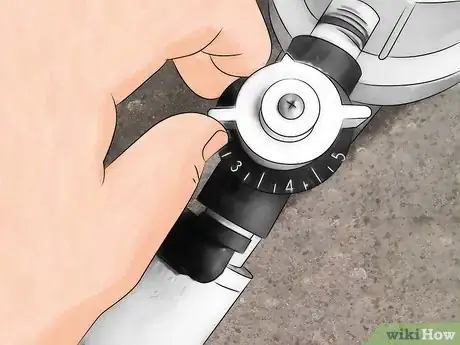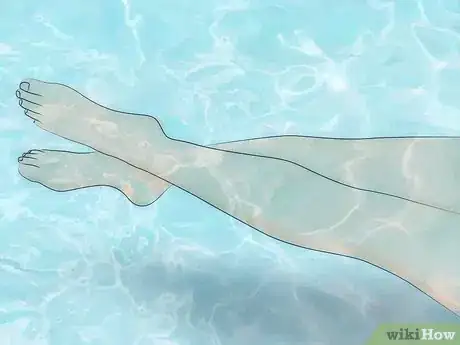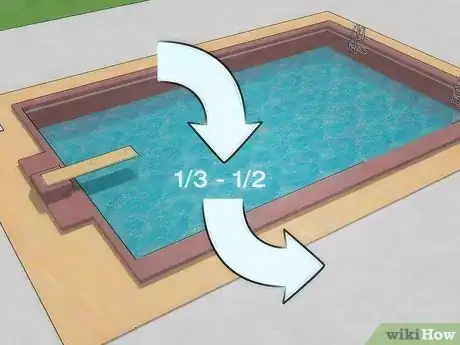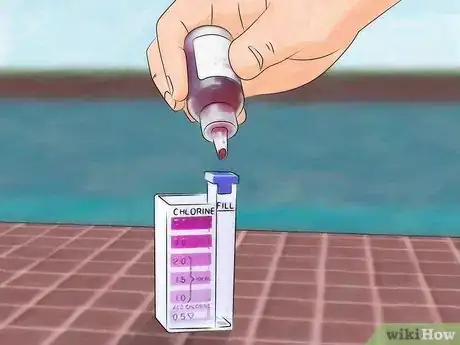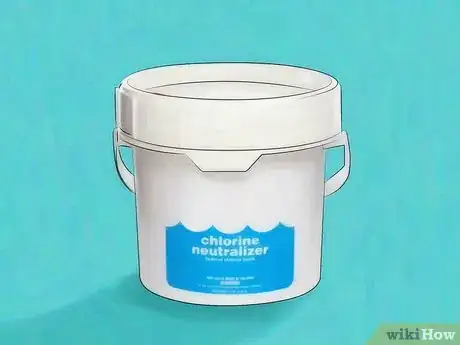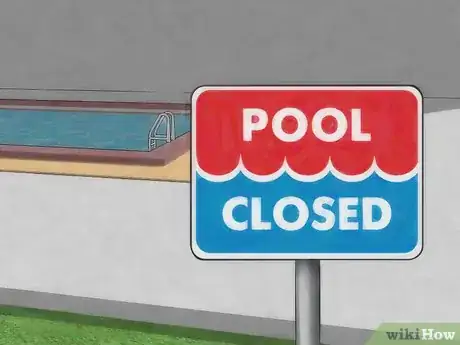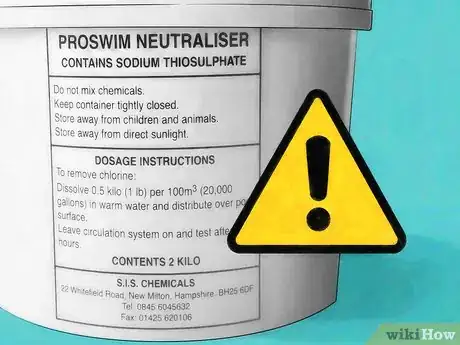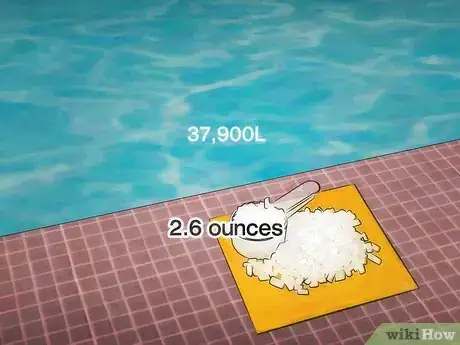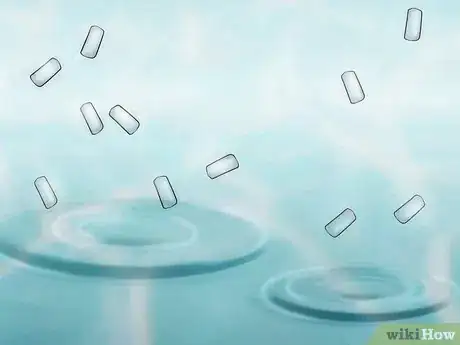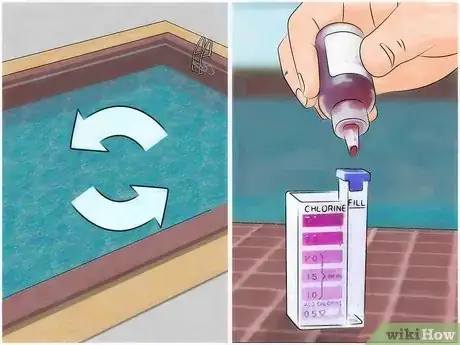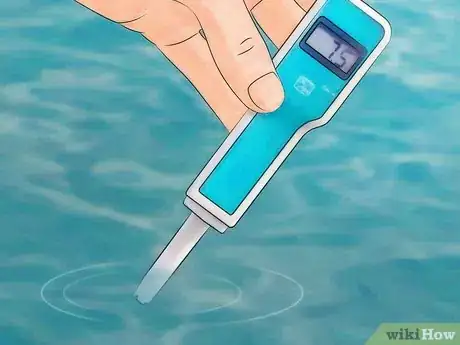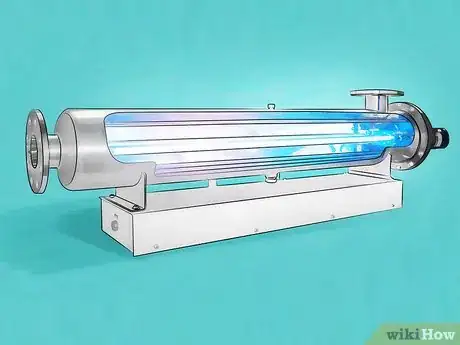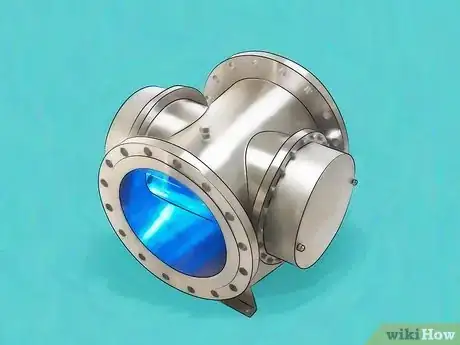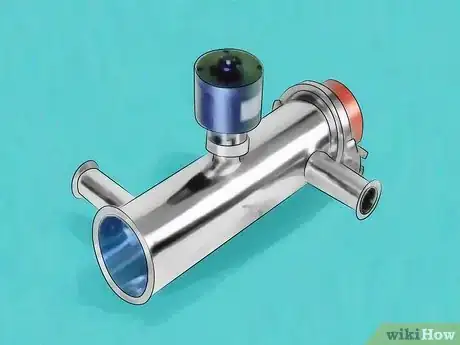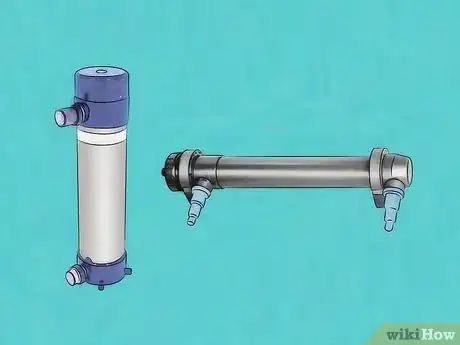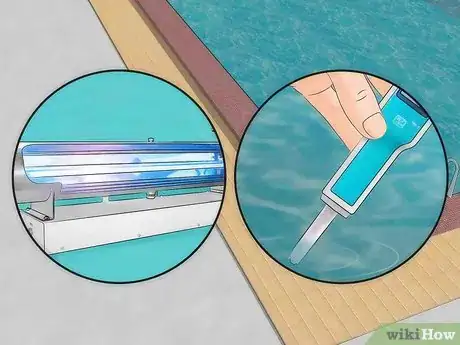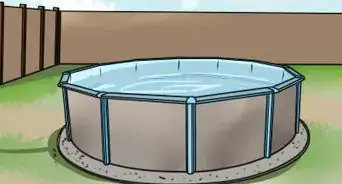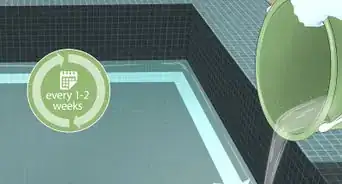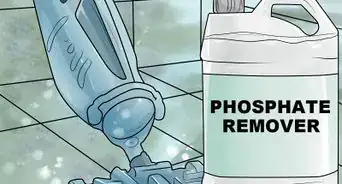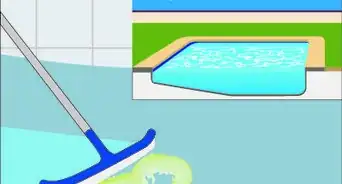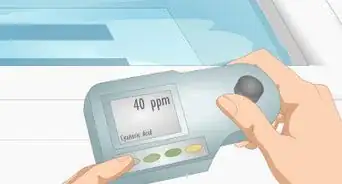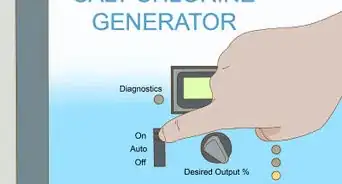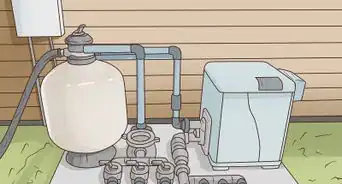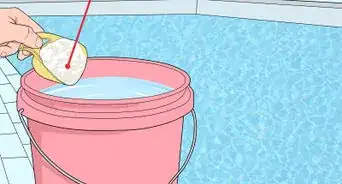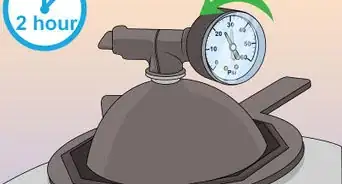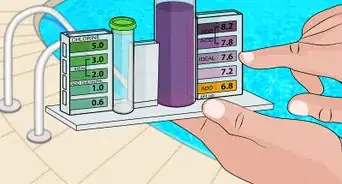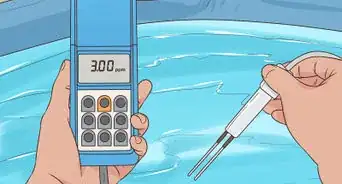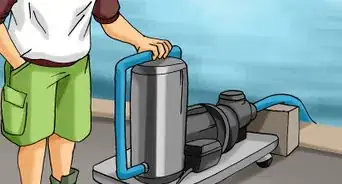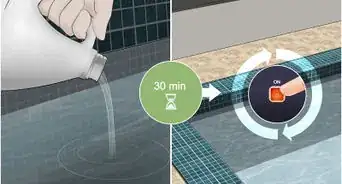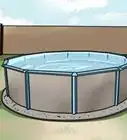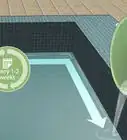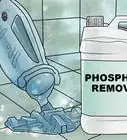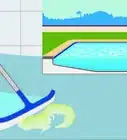This article was co-authored by Rob Litman. Rob Litman is a Landscaper, General Contractor, and the CEO of Vitoli Inc., a landscaping, hardscaping, ecoscaping, and swimming pool design company in Los Angeles, California. With over 20 years of experience in construction, Rob specializes in energy-efficient and drought-tolerant landscaping. He holds General Building Contractor (Class B) and Registered Pool/Spa Contractor Licenses. In 2007, Rob won House of the Year in Gardena, California.
There are 9 references cited in this article, which can be found at the bottom of the page.
wikiHow marks an article as reader-approved once it receives enough positive feedback. In this case, several readers have written to tell us that this article was helpful to them, earning it our reader-approved status.
This article has been viewed 689,555 times.
Pool chemistry can be frustrating at times, but high chlorine levels usually have an easy solution. Indoor pools can be more difficult to manage, but there are still many options available. If you'd like to reduce day-to-day chlorine levels without risking contamination, look into an ultraviolet system.
Steps
Basic Techniques
-
1Understand "chlorine smell" and stinging eyes. Many people think that a chemical smell or stinging eyes are signs of chlorine. In fact, these usually show up after chlorine has broken down into other chemicals. The right response is usually to raise chlorine with a shock treatment.[1] Better yet, use a test kit to get an accurate read of the chlorine, as described below.
-
2Use a pool test kit. If you haven't already, test the chlorine levels using a test kit from a pool supply store. Make sure the test kit measures both free available chlorine (FAC) and total chlorine.[2]
- As a general rule, free available chlorine (FAC) should be between 1 and 3 ppm. Total chlorine should be no more than 0.2 ppm higher than FAC. Your local health codes may have different requirements.[3]
- If your pool also uses ozone or UV disinfection, FAC can be reduced as low as 0.5 ppm.
Advertisement -
3Remove chlorine sources. If the chlorine levels are only slightly high (about 4–5ppm), chemicals are usually not necessary. Just stop adding chlorine to the pool, and the problem will likely solve itself.
- To stop adding chlorine, turn off the chlorinator, chlorine feeder, or salt water chlorine generator; take the chlorine tablet out of the pool skimmer; or remove the chlorine floater. If you are not sure which system the pool uses, ask the manager or owner.
-
4Uncover outdoor pools. Ultraviolet light from the sun rapidly breaks down chlorine. A single cloudless afternoon can remove 90% of your pool's chlorine, as long as you have removed all chlorine sources.
- Ultraviolet lamps are not usually a good replacement for this step. See the UV method below for more information.
-
5Swim while chlorine levels are still at safe levels. Swimming helps lower chlorine, but only try this if chlorine is at slightly high (4 ppm). Experts disagree on how much chlorine is dangerous to swimmers. Public pools often shut down at 10ppm, while some pools use a 5ppm limit to be extra safe.[4]
- Do not swim if your pool test had additional unexpected results, such as the wrong pH or alkalinity.
- Do not swim if you smell a strong "chlorine" smell (and the chlorine test gave high results). This smell is actually from irritating substances called chloramines.[5]
- Chlorine affects the lungs. It is more dangerous in poorly ventilated areas, and if the swimmers have breathing problems.[6]
-
6Replace some of the pool water. This is an expensive, slow option, but it will dilute the chlorine. Drain and replace about ⅓ to ½ of the pool. After refilling, your pool may take a long time to return to normal chlorine levels and pH.
- If you have a filter has a backwash option, this is the fastest way to (partially) drain your pool.
-
7Test regularly. Repeat the pool test once or twice a day, or every couple hours if the pool is still in use. If chlorine levels do not decrease within a couple days, try one of the methods below.
- See Tips below for guidelines on other test results, such as pH or cyanuric acid. If your test results fall outside these guidelines and do not correct themselves soon, you may need to hire a professional.
Adding Chemicals to Lower Chlorine
-
1Purchase a chlorine neutralizer from a pool supply store. Ask an employee for help if you are not sure what to choose. Do not use chemicals from other sources. The chemicals sold at the pool supply store are at a specific concentration intended for pools.
- Sodium thiosulfate is probably the most common chlorine neutralizer, but requires care when handling.
- Hydrogen peroxide is often the cheapest option, and breaks down into harmless substances. However, this is much less effective if your pool's pH is below 7.0.[7]
-
2Close the pool. Never add chemicals to a pool while swimmers are using it. If other people have access to the pool, put up clear warning signs.
-
3Follow safety precautions. Many pool chemicals can cause injury if they come into contact with lungs, eyes, or skin. Review this safety checklist before you continue:[8]
- Read the product label carefully for safe handling instructions. Follow all recommendations for safety equipment, and review emergency protocols.
- Store pool chemicals in a well-ventilated storage area, away from sunlight, heat, and moisture. Do not store acids and chlorine near each other. Do not store dry chemicals next to or underneath liquids.
- Only have one chemical container open at a time. Close the container and return it to storage before opening another.
-
4Calculate how much you need. Always follow product instructions to determine how to add it to the pool, and how much to use. Many chemicals are available in different forms and in different concentrations, so a general guide cannot cover every option.
- Generally, when adding sodium thiosulfate, allow for about 0.5 ounces (15mL) per 1,000 gallons (3,800L) water.
- If you're treating a public pool, go with a more accurate measurement. 2.6 ounces (77mL) sodium thiosulfate will lower chlorine by 1 ppm in 10,000 gallons (37,900L) of water.[9] A pool store employee or an online pool chlorine lowering calculator can help you with this formula.
-
5Add the neutralizer in small doses. Adding too much of the neutralizer can cause major problems: your chlorine can drop to zero, and the unused neutralizer will remain in the pool to destroy the next batch of chlorine as well. Use ⅓ or ½ as much as you calculated.
-
6Wait while testing frequently. Give the pool time to adjust according to label instructions. Test frequently and do not enter the pool until parameters are back to normal. If your measurements stabilize but chlorine is still too high, add another small dose of neutralizer.
- If your circulation system is slower than average, you may have to wait longer for the neutralizer to take effect.
-
7Raise the pH if necessary. These chemicals usually lower the pH of the pool. Be prepared to raise the pH once chlorine is back to normal. The pH value should be between 7.2 and 7.8, and ideally as close to 7.5 as you can get.[10]
Using Ultraviolet Lamps
-
1Understand UV disinfection. Ultraviolet (UV) lamps designed for pools can neutralize most germs. They cannot keep a pool safe on their own. However, they will let you reduce the amount of free available chlorine (FAC) as low as 1ppm, or even lower under some regional laws. They can also break down some of the irritating or dangerous substances that show up in a chlorinated pool. Finally, although not normally used for this purpose, some types may break down existing high levels of chlorine.
- Local health codes may have different requirements.
-
2Try a Medium Pressure UV lamp. A "MP" UV lamp is a versatile option with the following benefits:
- This is the only common lamp that will break down a significant amount of existing chlorine. Even then, you'll need a dose 10–20 times higher than the amount recommended for disinfection. This will probably require multiple lamps.
- This is the most effective lamp for breaking down chloramines, the substances usually responsible for stinging eyes, irritated skin, and "chlorine" smell.
- This lamp is fairly good at disinfecting, but not the best option.
-
3Consider a Low Pressure UV lamp. This type of lamp, often called a purifier, has excellent disinfecting ability, though you will still need to use (reduced) amounts of chlorine. This may make it an attractive option for public pools.
- These lamps also tend to be cheaper and longer-lasting than MP lamps.
- Advertisements may claim these lamps remove chloramines. This is partially true, but in practice they may or may not reduce the obvious signs, such as stinging eyes.
-
4Evaluate other types. There are a few other kinds of UV lamps, although they are less common. Here's some information to help you figure out what each product does:
- "Ultraviolet" actually includes a wide range of light with different effects. It is usually divided into UV-A (315–400nm), UV-B (280–315nm), and UV-C (100–280nm).[11] You should be able to find either the light type or a range of wavelengths (such as 245nm) for any product.
- Only UV-C light helps disinfect pools.
- Only UV-A light (including UV light from the sun) breaks down significant amounts of chlorine. Even then, it will take an intense amount of light.
- All three types help break down chloramines.
-
5Test the pool after installation. Hiring a professional to install the UV system is recommended. Once installed according to specifications, very little maintenance is required. Continue to test your pool for chlorine as usual, keeping it at 1ppm or another low level as recommended by your product or local law.
- To keep the pool in good condition, vacuum it once a week. The plaster cannot tolerate a lot of dust.[12]
- Vacuuming helps to maintain the color of the pool. When you go for a vacation, the water may become Tahoe blue or gray. But when you vacuum it, it becomes blue once again.
- This method is not expensive. The reason is that most vacuums do not cost more than $200.[13]
Community Q&A
Did you know you can get answers researched by wikiHow Staff?
Unlock staff-researched answers by supporting wikiHow
-
QuestionCan too much chlorine in a pool burn your skin?
 wikiHow Staff EditorThis answer was written by one of our trained team of researchers who validated it for accuracy and comprehensiveness.
wikiHow Staff EditorThis answer was written by one of our trained team of researchers who validated it for accuracy and comprehensiveness.
Staff Answer wikiHow Staff EditorStaff AnswerYes, chlorine in a pool can burn your skin if the levels are too high. Even at lower levels, chlorine can cause dry skin and people with sensitive skin can get a chlorine rash; at high levels it can cause a burning sensation, turn skin red and make it itchy. Direct contact with pool chlorine byproducts or off-gas can cause burns or skin blistering.
wikiHow Staff EditorStaff AnswerYes, chlorine in a pool can burn your skin if the levels are too high. Even at lower levels, chlorine can cause dry skin and people with sensitive skin can get a chlorine rash; at high levels it can cause a burning sensation, turn skin red and make it itchy. Direct contact with pool chlorine byproducts or off-gas can cause burns or skin blistering. -
QuestionWhat happens when there is too much chlorine in a pool?
 wikiHow Staff EditorThis answer was written by one of our trained team of researchers who validated it for accuracy and comprehensiveness.
wikiHow Staff EditorThis answer was written by one of our trained team of researchers who validated it for accuracy and comprehensiveness.
Staff Answer wikiHow Staff EditorStaff AnswerA pool with too much chlorine has chemical overload. This is bad for both swimmers and the pool. Swimmers may experience a range of symptoms, including burning/itching eyes and skin, breathing problems (including asthma), nausea, stomach and/or chest pains, etc. As for the pool, it may become too acidic, which may corrode metal fittings, pipes and concrete.
wikiHow Staff EditorStaff AnswerA pool with too much chlorine has chemical overload. This is bad for both swimmers and the pool. Swimmers may experience a range of symptoms, including burning/itching eyes and skin, breathing problems (including asthma), nausea, stomach and/or chest pains, etc. As for the pool, it may become too acidic, which may corrode metal fittings, pipes and concrete. -
QuestionWhat are the side effects of too much chlorine?
 wikiHow Staff EditorThis answer was written by one of our trained team of researchers who validated it for accuracy and comprehensiveness.
wikiHow Staff EditorThis answer was written by one of our trained team of researchers who validated it for accuracy and comprehensiveness.
Staff Answer wikiHow Staff EditorStaff AnswerToo much chlorine can result in eye and skin irritation/redness. If the chlorine levels are high enough to cause chlorine poisoning, you can experience such symptoms as nausea, vomiting, itching/burning or even blurry eyes, triggering of asthma or other breathing difficulties, burning/painful or swollen throat, restricted breathing, chest and/or stomach pains, skin reactions, blood in your stools, lowered blood pressure, etc. Open wounds may be irritated or burned from contact with high levels of chlorine.
wikiHow Staff EditorStaff AnswerToo much chlorine can result in eye and skin irritation/redness. If the chlorine levels are high enough to cause chlorine poisoning, you can experience such symptoms as nausea, vomiting, itching/burning or even blurry eyes, triggering of asthma or other breathing difficulties, burning/painful or swollen throat, restricted breathing, chest and/or stomach pains, skin reactions, blood in your stools, lowered blood pressure, etc. Open wounds may be irritated or burned from contact with high levels of chlorine.
Warnings
- If you're still getting unexpected results, check the other test results. For stable chlorine levels, pH should be between 7.2 and 7.8; alkalinity should be between 80 and 120 ppm (depending on type of chlorine), and cyanuric acid between 30 and 50 ppm.[15] Your local health codes may have slightly different standards.⧼thumbs_response⧽
- In some regions, pool tests include a substance called orthotolidine, which has been linked to cancer risk. Wear gloves while handling these tests, and do not dump the sample back in the pool. Note that these tests only measure total chlorine, not the "free" chlorine actually available for disinfection.[16]⧼thumbs_response⧽
References
- ↑ http://www.ncceh.ca/documents/practice-scenario/pool-chlorination-and-closure-guidelines
- ↑ http://chlorine.americanchemistry.com/Pool-Treatment-101
- ↑ http://chlorine.americanchemistry.com/Pool-Treatment-101
- ↑ http://www.ncceh.ca/documents/practice-scenario/pool-chlorination-and-closure-guidelines
- ↑ http://www.ncceh.ca/documents/practice-scenario/pool-chlorination-and-closure-guidelines
- ↑ https://www.researchgate.net/publication/49600287_Potential_negative_effects_of_chlorinated_swimming_pool_attendance_on_health_of_swimmers_and_associated_staff
- ↑ http://www.poolforthought.com/lowering-swimming-pool-chlorine/
- ↑ http://chlorine.americanchemistry.com/Free-Resources/Pool-Chemical-Safety-Resources.html
- ↑ http://www.in.gov/isdh/files/Chemical_adjustment_pool.pdf
- ↑ http://chlorine.americanchemistry.com/Pool-Treatment-101
- ↑ http://www.who.int/uv/uv_and_health/en/
- ↑ https://www.forbes.com/advisor/home-improvement/how-to-vacuum-a-pool/
- ↑ https://www.forbes.com/advisor/home-improvement/how-to-vacuum-a-pool/
- ↑ http://chlorine.americanchemistry.com/Pool-Treatment-101
- ↑ http://chlorine.americanchemistry.com/Pool-Treatment-101
- ↑ http://www.cdc.gov/safewater/chlorine-residual-testing.html
About This Article
To lower chlorine in a pool that is only slightly high, remove all chlorine sources and uncover the pool to let the sun break down the excess chemical. Check the chlorine levels twice a day using a pool test kit to see when it is at the right level. If that isn’t enough, make sure no one is in the pool and add 0.5 ounces of chlorine neutralizer per 1,000 gallons of water. Add it a little at a time, and test the chlorine levels frequently to make sure you haven’t put too much in. Scroll down to learn how to reduce the chlorine using UV lamps!
